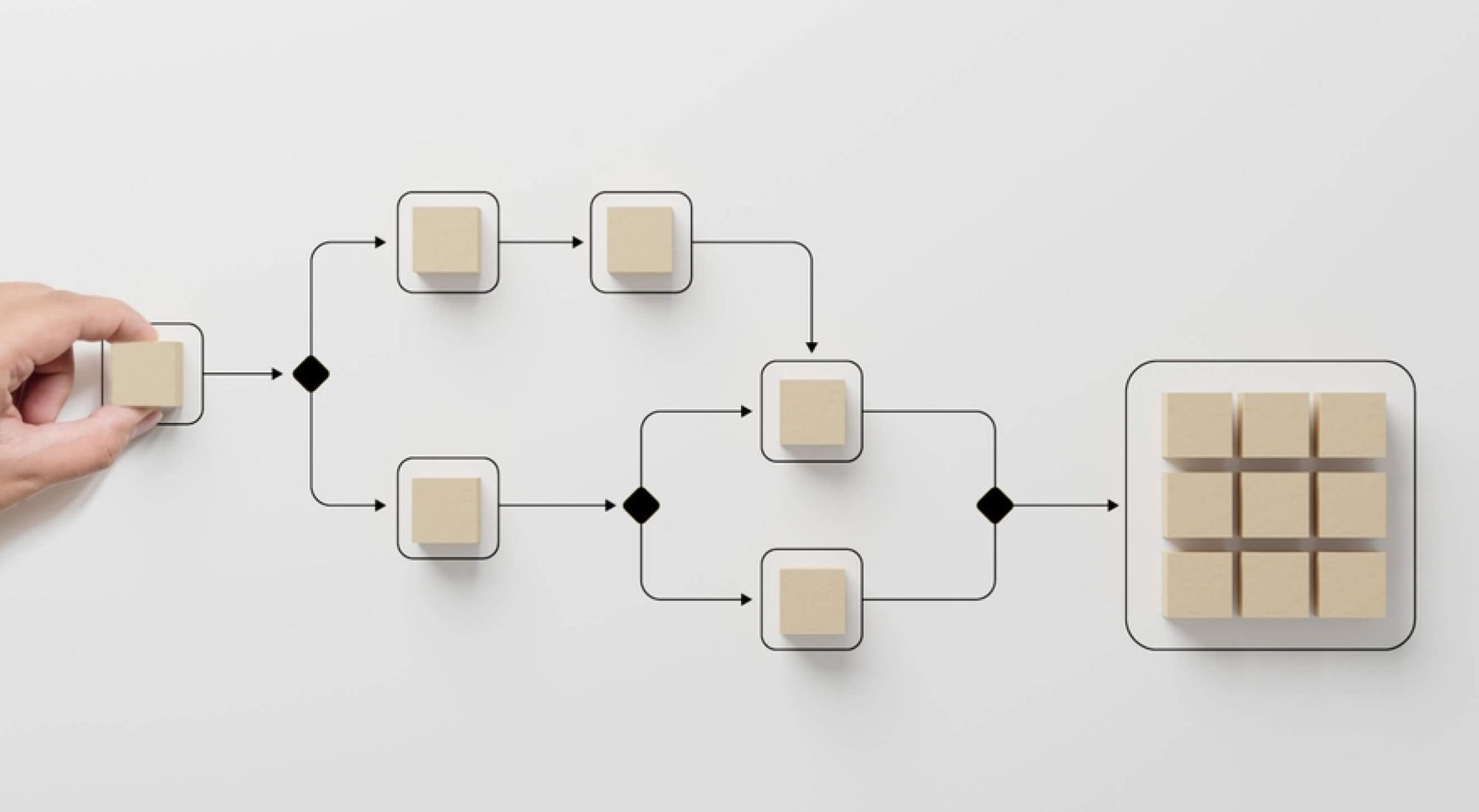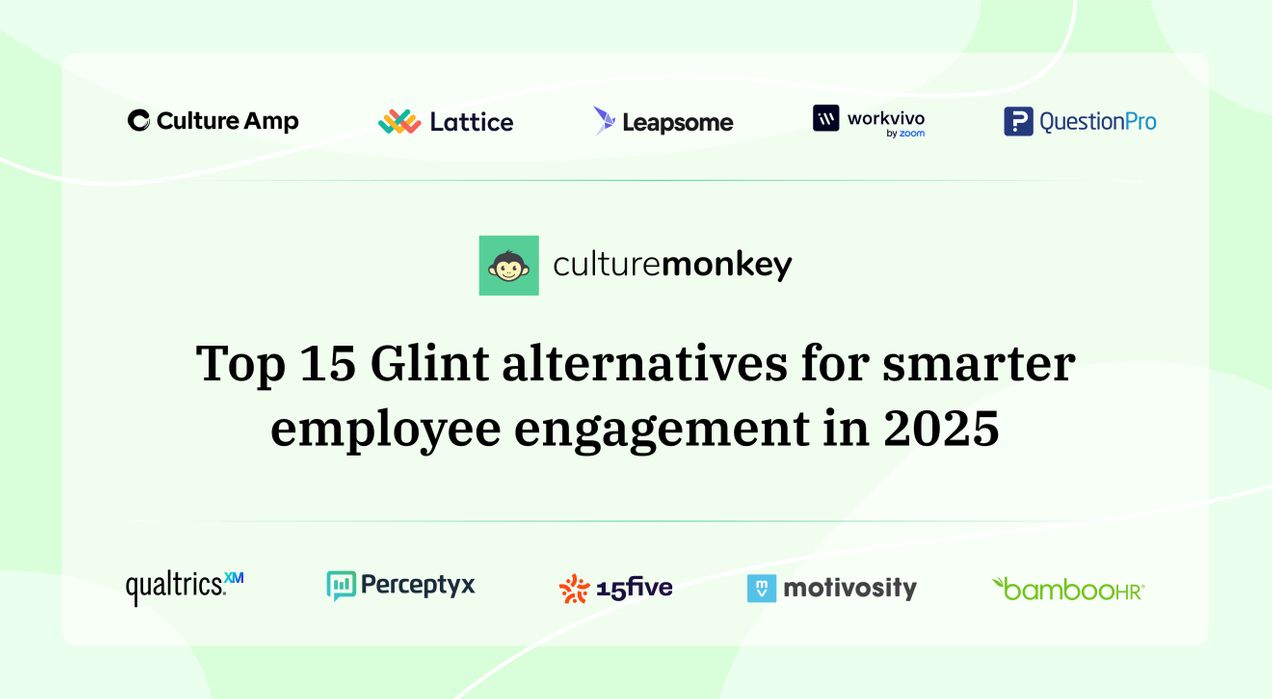How an employee engagement system improves feedback, trust, and performance

Every evening, the kitchen came alive. Orders flew in, pans clanged, and voices overlapped. At first, it was exciting, a team of skilled chefs chasing perfection. But soon, cracks appeared. Missed orders. Burnt dishes. Rising tempers. The talent was there, but the system wasn’t.
Then came the shift: a simple board to track orders, daily check-ins, shared notes. Suddenly, feedback flowed. Trust followed. Performance soared. An employee engagement system is like that board in the kitchen—not flashy, but vital.
It brings structure to the chaos, gives voice to the quiet, and turns scattered efforts into synchronized impact. And just like that, your team begins to thrive.
TL;DR
What is an employee engagement system in the workplace

TL;DR
It’s a structured system that tracks employee sentiment through surveys and real-time feedback—not gut feel. It turns insights into action and helps HR and managers respond with consistency across teams, roles, and locations.
More than data collection, it enables culture improvements by linking feedback to performance, morale, and engagement strategy.
An employee engagement system is more than just a fancy dashboard; it’s a structured approach to understanding how your employees feel, what they need, and how you can support them in doing their best work. Think of it as your behind-the-scenes engine for employee engagement tools, real-time feedback, constructive feedback communication, and culture insights, all rolled into one system.
At its core, an employee engagement system helps you measure engagement levels through ongoing surveys, pulse checks, and sentiment analysis. But the real value lies in what happens after the feedback comes in through the employee engagement model . These systems don’t just collect data; they help you interpret it, act on it, and track changes over time.
So, what is an employee engagement system doing differently than old-school methods? For starters, it doesn’t rely on gut feelings or one-off conversations. It offers a consistent, scalable way to define employee engagement and integrate with performance management while keeping your finger on the pulse of employee morale across teams, locations, and roles.
10 Common uses of employee engagement systems

Employee engagement systems aren’t just about tracking happiness—they’re built to solve real workplace challenges. From surfacing team-level insights to preventing burnout, engagement initiatives help leaders take the guesswork out of culture-building.
Here are 10 practical ways organizations can implement effective employee engagement initiatives daily to boost employee morale .
1. Running pulse surveys consistently
One of the biggest strengths of any engagement system for employees is its ability to run short, frequent pulse surveys. These employee engagement surveys give you real-time insights into employee sentiment and help gauge levels of satisfied employees without overwhelming your staff with long forms.
2. Tracking team morale over time
With built-in dashboards and trend analytics, team engagement tools help managers monitor morale shifts and identify teams that need attention. This is crucial because engaged employees produce better results, just like spotting the smoke before the fire starts.
3. Collecting anonymous feedback
An employee engagement system allows safe, anonymous channels for employees to speak honestly. This builds effective communication, ensuring open and transparent communication, psychological safety, and creates a healthier, more open feedback culture.
4. Improving manager effectiveness
By surfacing team feedback directly to leaders, staff engagement tools help managers measure employee engagement, recognize employee recognition, understand their blind spots, communication gaps, and opportunities for improvement.
5. Driving recognition programs
Many platforms include peer recognition features that make it easy to celebrate wins. These employee engagement software perks, which reward employees, boost job satisfaction, morale, and reinforce positive behaviors without added HR overhead.
6. Detecting burnout and disengagement
Smart analytics spot patterns—like survey fatigue, low energy scores, or recurring stress feedback—that might signal burnout. That way, you're not solving issues after it’s too late, which ultimately leads to better business outcomes .
7. Informing leadership decisions
The best employee engagement resources offer high-level reports that help HR and leadership connect employee sentiment to business outcomes. Think turnover risk, productivity trends, and how to cultivate highly engaged employees cultural hotspots.
8. Personalizing employee experience
Some engagement platforms segment data to help customize support by department, role, or even tenure. This drives employee engagement and makes engagement efforts more relevant and effective across diverse employee groups.
9. Supporting change management
Whether it’s a reorg, policy change, or new leadership, engagement systems help gauge employee reactions in real time. It’s like having a feedback GPS during big transitions.
10. Reducing attrition
By listening early and often, organizations using workplace engagement tools can proactively address frustrations before they lead to exits. It’s a retention game-changer when used right.
Key features of a powerful engagement platform

TL;DR
Great platforms don’t just gather input, they drive action. Look for always-on pulse surveys, real-time sentiment tracking, anonymous feedback, and smart dashboards that help managers act quickly.
Seamless HR tool integration and automated loops close the feedback-action gap, making engagement a continuous, visible process—not a yearly ritual.
Not all engagement systems are created equal. The right one won’t just collect feedback—it’ll help you understand it, act on it, and improve real outcomes like trust, retention, while addressing disengaged employees and performance.
Here are the must-have features to look for in your next employee engagement system that will increase employee participation.
- Always-on pulse survey functionality: Consistent feedback is the backbone of modern team engagement tools. Always-on pulse surveys allow employees to share thoughts at any time—not just once a year—so you can keep a steady pulse on employee sentiment without waiting for a crisis.
- Real-time sentiment analytics: Look for systems that offer real-time sentiment tracking through AI or keyword analysis. These insights help you spot trends or tension early and give employee engagement experts the data they need to take proactive steps before issues escalate.
- Customizable survey templates: The best employee engagement software offers pre-built survey templates aligned with various HR goals, from onboarding to DEI to manager feedback. Customization ensures you ask the right questions for your culture and team needs.
- Anonymous response support: Anonymity is key to trust. Platforms that prioritize anonymous feedback allow employees to be candid, without fear of backlash. This feature is especially valuable in staff engagement tools aiming to create a safe space for honest input.
- Actionable dashboards for managers: Dashboards shouldn't just report—they should guide. The right employee engagement services will include visual dashboards that break down feedback by team, time, or theme, helping managers turn insights into concrete actions.
- Seamless HR tool integrations: Your engagement system for employees should plug into tools you're already using—like your HRMS, Slack, or Teams. Seamless integration ensures feedback is part of your workflow, not an extra step that gets forgotten.
- Automated feedback loops: Closing the feedback loop matters. Smart systems use automation to trigger follow-up surveys, notify managers of critical feedback, or prompt action items—so your workplace engagement tools don’t just gather input but create continuous improvement cycles.
How engagement systems gather and manage employee feedback?

TL;DR
Modern platforms automate feedback collection via surveys, text, and quick polls—then use AI to extract insights fast. They organize input centrally and anonymously for easy tracking.
With built-in reminders, NLP, and team-level dashboards, they streamline analysis and tie feedback directly to action planning and accountability.
Gone are the days of clunky suggestion boxes and ignored emails. Today’s employee engagement platform captures feedback smartly and organizes it in ways that actually drive action in the realm of human resource management. Here’s how modern platforms do the heavy lifting behind the scenes.
- Multi-format feedback collection: Whether it’s a quick emoji rating, open-text response, or a detailed pulse survey, engagement platforms let you gather feedback in multiple formats. This flexibility makes it easier for every employee to engage, no matter their communication style.
- Anonymous survey channels: Anonymity is critical for honest feedback. Team engagement tools typically allow employees to submit anonymous surveys so they can speak freely without fear of being identified, especially helpful when surfacing sensitive topics or concerns.
- Automated distribution and reminders: These systems handle the logistics too—automatically sending surveys, nudging non-responders, and scheduling follow-ups. It takes the burden off HR and ensures consistent input through smart timing and delivery.
- Natural language processing (NLP): Using AI-powered text intelligence, employee engagement software can sift through open comments and detect themes, sentiment, or urgency. This gives you deep insights without manual tagging or guesswork.
- Centralized feedback repository: All feedback—whether from surveys, quick polls, or manager check-ins—is stored in one centralized hub. This makes it easier for employee engagement experts to search, segment, and spot long-term patterns across teams.
- Manager-specific insights: Modern staff engagement tools don’t just give a bird’s eye view—they zoom in, offering team-level insights that help each manager understand what’s going well or what’s missing, so they can respond faster and better.
- Integration with action planning: The best employee engagement services connect feedback directly to action planning tools, so once a trend is identified, leaders can assign follow-ups, set goals, and close the loop without leaving the platform.
Real-time vs. Annual surveys: Why always-on systems win

Annual surveys might feel like a big event—but by the time results are analyzed, they're often stale. Real-time, always-on feedback systems offer agility, relevance, and faster response. Here’s how the two approaches stack up across key areas, including the impact on discretionary effort.
| Aspect | Annual surveys | Real-time (Always-on) systems |
|---|---|---|
| Frequency | Conducted once a year, sometimes skipped altogether. | Ongoing, with pulse checks and feedback channels always open. |
| Relevance of feedback | Often outdated by the time action is taken. | Captures current employee sentiment in real time. |
| Engagement rate | Lower due to survey fatigue or timing issues. | Higher due to shorter, timely, and more relevant surveys. |
| Issue detection | Delayed—problems surface months later. | Immediate—systems flag red flags as they arise. |
| Actionability | Requires time to analyze and plan responses. | Insights are instantly available for managers to act on. |
| Manager visibility | Limited—feedback may be aggregated too broadly. | Team-level insights are readily accessible to leaders. |
| Integration potential | Rarely connects with HR tools or workflows. | Seamlessly integrates with employee engagement software and HR platforms. |
The role of pulse surveys in continuous engagement
TL;DR
Pulse surveys offer fast, focused check-ins that boost response rates and capture real-time sentiment after changes or events. They’re short, easy, and frictionless.
Used regularly, they help leaders listen actively, catch issues early, and keep engagement visible and ongoing—not stuck in an annual survey cycle.
Pulse surveys are the backbone of modern engagement strategies. Unlike traditional long-form surveys, these quick check-ins keep a steady flow of employee input without overwhelming them. Let’s break down how they fuel continuous engagement.
- Capture real-time sentiment: Pulse surveys allow you to collect timely feedback as things happen—whether it’s after a town hall, a team restructure, or policy rollout. That way, your employee engagement system stays aligned with what your people are actually experiencing.
- Boost participation rates: Because they’re short and focused, pulse surveys tend to see higher response rates compared to lengthy annual forms. This makes them an essential part of team engagement tools designed to encourage regular and frictionless input.
- Promote a culture of listening: Frequent surveys signal that you’re not just listening once a year—you’re listening always. This improves employee trust and positions your engagement system for employees as a reliable channel for communication and feedback.
- Enable rapid course correction: Spotting dips in engagement or rising stress levels early means you can act fast. Pulse surveys give employee engagement experts the agility to shift strategy before issues spiral into bigger problems.
- Support ongoing improvement: By gathering feedback on a rolling basis, staff engagement tools help HR and managers identify what’s working—and what’s not—throughout the year, making improvements a continuous process rather than a one-time fix.
- Integrate easily into workflows: Modern employee engagement software makes it easy to deploy pulse surveys via Slack, email, or internal platforms. This ensures engagement becomes part of your daily rhythm, not just another task to remember.
How does anonymous feedback improve workplace trust?

TL;DR
Anonymity encourages honest input, especially on tough topics. It builds psychological safety, exposes hidden issues, and boosts both volume and quality of responses.
When leaders act on anonymous feedback, trust grows—making employees more willing to speak up and contribute to a transparent, healthy culture.
If employees don’t feel safe sharing the truth, feedback loses all its value. That’s where anonymity steps in, especially as it relates to professional growth .
When done right, anonymous input through an employee engagement system builds a culture rooted in honesty and trust.
1. Encourages honest responses
People are far more likely to share real concerns when their identity is protected. Anonymous feedback removes fear of judgment, allowing employee engagement experts to uncover deeper, more actionable insights.
2. Surfaces hidden issues
Sensitive topics like poor leadership, discrimination, or toxic dynamics often go unspoken. Anonymity gives these conversations a place to exist, making staff engagement tools key for transparency and organizational health.
3. Reduces fear of retaliation
Even with open-door policies, many employees hold back. Anonymous surveys reduce this fear and show that your engagement system for employees values input without consequences, fostering a culture of engaged employees .
4. Promotes psychological safety
When employees see that candid feedback is welcomed and respected, it fosters trust. Anonymous tools within employee engagement software make it easier to normalize open dialogue.
5. Improves feedback volume and quality
Employees who may normally stay silent feel empowered to speak up, which increases both the number and depth of responses. This helps workplace engagement tools paint a more accurate cultural picture.
6. Builds credibility over time
When leadership consistently responds to anonymous feedback, it shows that the process is working. Over time, this boosts trust in both the employee engagement system and the organization itself.
7. Supports inclusive participation
Not everyone is equally comfortable speaking up. Anonymity levels the playing field, ensuring diverse voices are heard, especially in large or distributed teams using team engagement tools across departments.
Integrations: How systems work with your existing HR tools
No one wants another disconnected platform floating outside their tech stack. The best employee engagement systems integrate smoothly with the HR tools you already use, making them easy to adopt, manage, and scale across teams.
Syncs with HRMS platforms
Whether it’s SAP, Workday, or BambooHR, top employee engagement software integrates directly with your HRMS. This allows automatic syncing of employee data like roles, departments, and tenure—no manual uploads needed.
Enables personalized survey targeting
With HR data flowing in, your system can target surveys based on team, location, or job level. This makes staff engagement tools smarter and more relevant for every employee group.
Automates onboarding and exit surveys
When integrated with your HR workflows, surveys can be automatically triggered during key moments, like onboarding or exits. It ensures your engagement system for employees captures feedback when it matters most.
Supports collaboration tools like Slack and Teams
Modern systems plug into platforms your employees already use. Whether it’s Slack, MS Teams, or email, integrations help your workplace engagement tools become a seamless part of daily communication.
Centralized engagement data
Integrations funnel feedback into your core HR analytics dashboards. This makes it easier for employee engagement experts to connect survey data with performance, retention, or turnover metrics.
Automates action plans and reminders
Some employee engagement services allow integration with task management tools like Asana or Trello, which can help increase employee engagement by turning engagement survey results into actionable items that are assigned and tracked automatically.
Reduces admin overhead
Integrated systems cut down on repetitive tasks like uploading lists, creating segments, or sending reminders. With team engagement tools synced to your core systems, HR can focus on driving strategy, not chasing data.
AI and analytics in engagement platforms: What’s new in 2025

AI is no longer just a buzzword—it’s reshaping how we understand employee sentiment. In 2025, employee engagement systems will use smarter analytics to go beyond numbers and capture the “why” behind disengagement. Here's what’s making waves this year.
Predictive engagement scoring
Modern employee engagement software can now forecast who’s likely to disengage or exit, based on patterns like feedback tone, response frequency, or workload changes. These predictions help managers intervene early and retain top talent.
Emotion and tone detection in text feedback
AI-powered text intelligence isn’t just tracking keywords—it’s analyzing emotional tone, urgency, and intent. Employee engagement experts can now detect frustration, confusion, or burnout from open-ended survey responses without reading each one manually.
Personalized manager insights
Advanced analytics deliver tailored insights to each team lead. Instead of sifting through dashboards, managers get targeted, actionable takeaways, making team engagement tools far more practical and effective for everyday use.
Continuous benchmarking with industry data
AI tools now compare your engagement scores with peers in your industry, size, or geography. These real-time benchmarks help staff engagement tools show where you’re excelling—and where you’re falling behind.
Automated pulse-to-action workflows
In 2025, workplace engagement tools can auto-generate action plans based on survey themes. If “lack of communication” pops up repeatedly, the system might suggest leadership training or create a task in your HR tool. No delay, just action.
How to choose the right engagement system for your company?

Picking an employee engagement system isn’t just about shiny dashboards. It’s about finding a solution that fits your people, goals, and workflow. Here’s how to make a smart, future-ready choice without the headache.
- Define your engagement goals: Start by asking: What are we trying to solve? Is it turnover? Low morale? Lack of manager feedback? Clarifying your goals will help you pick the right employee engagement resources that address your unique needs.
- Prioritize flexibility and scalability: Choose staff engagement tools that grow with your business. Whether you're scaling from 50 to 500 employees or managing hybrid teams, your system should handle complexity without becoming a burden.
- Look for built-in pulse and anonymous surveys: Don’t settle for static survey forms. The best team engagement tools offer customizable pulse surveys and support anonymity, giving you continuous, honest feedback you can actually work with.
- Check integration capabilities: Ensure your engagement system plays well with your existing HR tech. Seamless syncing with your HRMS, communication tools, and analytics dashboards will keep workplace engagement tools running smoothly and visibly.
- Evaluate analytics and reporting strength: Look for platforms with AI-driven insights, sentiment analysis, and customizable dashboards. This is where employee engagement experts can turn raw data into real action, without spending hours on spreadsheets.
- Consider support and onboarding services: Even the best software fails without good support. Choose employee engagement services that offer onboarding help, training, and ongoing guidance—so your team actually uses the system, not just logs into it.
How are employee engagement systems implemented?
Rolling out an employee engagement system doesn’t have to be a drawn-out IT project. With the right plan, you can launch quickly and start seeing insights within weeks, not months. Here’s a simple breakdown of the implementation journey.
- Set clear implementation goals: Start by aligning leadership on what success looks like. Whether you're improving communication or reducing attrition, defining these targets upfront makes your employee engagement services more focused and trackable.
- Sync with existing HR tools: Before surveys go live, your workplace engagement tools should be integrated with HRMS, payroll, and communication platforms. This ensures automatic syncing of employee data and seamless workflows from day one.
- Design the initial survey strategy: Work with your provider or employee engagement experts to map out your survey calendar. Include a mix of onboarding, pulse, and lifecycle surveys tailored to your team's current engagement needs.
- Train managers and champions: Don’t just roll it out—equip people to use it. Train your people managers and internal champions to interpret results and take ownership of team-level insights using team engagement tools.
- Launch with a communication plan: Announce the system with clarity. Employees should understand why feedback matters, how anonymity works, and how their input will shape change. Trust starts with transparency—even before the first survey.
- Review and refine continuously: After launch, monitor participation rates and trends. Use feedback to refine survey questions, rollout timing, or manager engagement tactics. The best employee engagement software evolves with your culture, not just deploys once and disappears.
Measuring ROI: Engagement metrics that actually matter
Investing in an employee engagement system is only worthwhile if you can tie it to real outcomes. The right metrics help you track progress, justify spend, and make smarter people decisions. Here are the eight that truly move the needle.
1. Survey participation rate
This shows how many employees are actually engaging with your surveys. Low participation signals apathy or mistrust, while high rates suggest that your employee engagement software is doing its job—capturing relevant, timely input.
2. Employee engagement score
A core metric found in most staff engagement tools, this reflects overall sentiment across areas like satisfaction, motivation, and alignment. It’s your go-to pulse check for how connected employees feel to their work.
3. eNPS (Employee Net Promoter Score)
eNPS tells you how likely employees are to recommend your workplace to others. A high score means your engagement system for employees is supporting loyalty, while a low one highlights cultural or operational red flags.
4. Manager responsiveness
This tracks how often and how quickly managers respond to feedback. It’s a great way to assess the impact of your team engagement tools and whether action is actually being taken post-survey.
5. Turnover and retention rates
When used alongside exit survey data, these metrics help you link engagement levels to attrition. A strong employee engagement system often correlates with improved retention, especially in high-turnover roles.
6. Feedback-to-action ratio
Collecting feedback is easy—acting on it is the real win. This metric helps you measure how often survey insights lead to tangible actions or changes. It’s also a favorite KPI among employee engagement experts.
7. Sentiment trend analysis
By tracking sentiment over time, workplace engagement tools help you spot patterns, both positive and negative. For example, a steady decline in morale after a policy change can point to deeper issues.
8. Time-to-action
How quickly are managers or HR taking action once feedback is received? The shorter this gap, the more agile and trusted your process becomes, allowing you to better understand how invested employees are in their role, boosting the credibility of your employee engagement services.
Engagement system vs. Employee listening tool: What’s the difference?
The terms often get tossed around like they’re interchangeable—but they’re not. While both aim to understand employees better, their scope, functionality, and impact can be quite different. Let’s break it down side by side.
| Aspect | Employee listening tool | Employee engagement system |
|---|---|---|
| Primary function | Focuses on collecting feedback through surveys or sentiment channels | Goes beyond feedback to drive action, culture, and performance |
| Depth of insights | Offers raw or basic analysis of employee feedback | Provides detailed analytics, trends, and predictive insights via AI |
| Feedback frequency | Often used for periodic or project-specific feedback | Designed for continuous engagement through pulse surveys and lifecycle check-ins |
| Action planning | Rarely includes tools for turning feedback into strategy | Includes dashboards and tools for follow-ups, tracking, and accountability |
| Integration capabilities | May work in isolation or with limited integrations | Connects with HRMS, Slack, Teams, and other workplace engagement tools |
| Who uses it | Typically used by HR teams for listening purposes | Used by HR, managers, and leaders to manage employee experience end-to-end |
| Overall scope | Part of the engagement puzzle | A complete solution combining feedback, analytics, and employee engagement services |
Why CultureMonkey is the employee engagement system built for insights, action, and scale

If you're looking for a system that doesn’t just collect feedback—but actually drives change—CultureMonkey checks every box. It’s trusted by HR leaders who need scalable, intelligent, and easy-to-use employee engagement software. Here’s what makes it stand out:
1. Always-on pulse surveys that fit your culture
CultureMonkey’s customizable employee surveys help you gather continuous, bite-sized feedback without overwhelming your employees. It’s an ideal fit for companies that want their staff engagement tools to feel natural, not intrusive.
2. Smart text intelligence for deeper meaning
Open-text feedback is rich but messy. CultureMonkey’s text intelligence uses AI to categorize responses by sentiment and theme, so employee engagement experts can uncover what really matters without hours of manual reading.
3. AI insights that drive real action
The platform delivers AI insights directly to managers and HR leaders, offering suggested next steps and red flag alerts. It transforms raw data into strategy, perfect for team engagement tools that prioritize responsiveness.
4. Seamless HRMS integration for smoother workflows
CultureMonkey integrates effortlessly with leading HRMS platforms, syncing employee data in real time. This keeps your engagement system for employees accurate, automated, and fully embedded in your ecosystem.
5. Built to scale with your organization
Whether you're a team of 100 or 10,000, CultureMonkey adapts to your structure, making it one of the most scalable workplace engagement tools available. Growth-ready, insight-driven, and action-focused—that’s the CultureMonkey way.
Conclusion
Employee engagement isn’t a once-a-year checkbox—it’s a living system that thrives on continuous feedback, trust, and action. The right employee engagement system doesn’t just gather data; it helps you understand your people, respond in real time, and build a culture that performs.
Whether you’re managing hybrid teams, scaling fast, or simply trying to retain highly engaged top talent, choosing the right engagement solution makes all the difference for the entire organization .
That’s where CultureMonkey comes in—built for speed, insight, and impact. With features like pulse surveys, text intelligence, AI-powered insights, and seamless HRMS integration, it’s everything you need to go from listening to leading.
Summary
FAQs
1. How is it different from a feedback tool?
A feedback tool simply collects responses, often without structure or follow-through. An employee engagement system, on the other hand, gathers feedback, analyzes it, and helps drive action. It includes features like pulse surveys, analytics, and team dashboards—making it more strategic and impactful than standalone feedback forms.
2. What features should I look for in an engagement system?
Look for employee engagement software that includes pulse surveys, text analysis, AI-driven insights, and integration with your HRMS. The best systems also support anonymous feedback, customizable templates, and manager-specific dashboards—ensuring they serve both HR and leadership needs while scaling with your organization’s growth.
3. Can engagement systems improve employee retention?
Yes—by capturing real-time sentiment and surfacing issues early, employee engagement systems help companies reduce churn. When employees feel heard and see action taken on feedback, employee satisfaction and trust builds. This proactive approach can significantly improve retention, especially when powered by AI and consistent follow-up.
4. How does CultureMonkey support employee engagement?
CultureMonkey supports engagement through always-on pulse surveys, AI-powered text intelligence, and actionable manager insights. Its HRMS integration ensures personalized experiences across teams. The platform empowers HR and leaders to turn feedback into measurable change, making it a standout among modern team engagement tools.
5. Are anonymous surveys part of engagement systems?
Absolutely. Most leading staff engagement tools include anonymous survey options to promote psychological safety. Anonymity encourages more honest feedback, helping companies surface sensitive issues, improve transparency, and build a more trustworthy workplace culture over time.
6. Do engagement platforms integrate with HR tools?
Yes—modern employee engagement services are designed to integrate with HRMS, payroll, and communication tools like Slack or Teams. This ensures seamless data syncing, smarter targeting, and less manual work for HR teams, while embedding workplace engagement tools into everyday operations.



